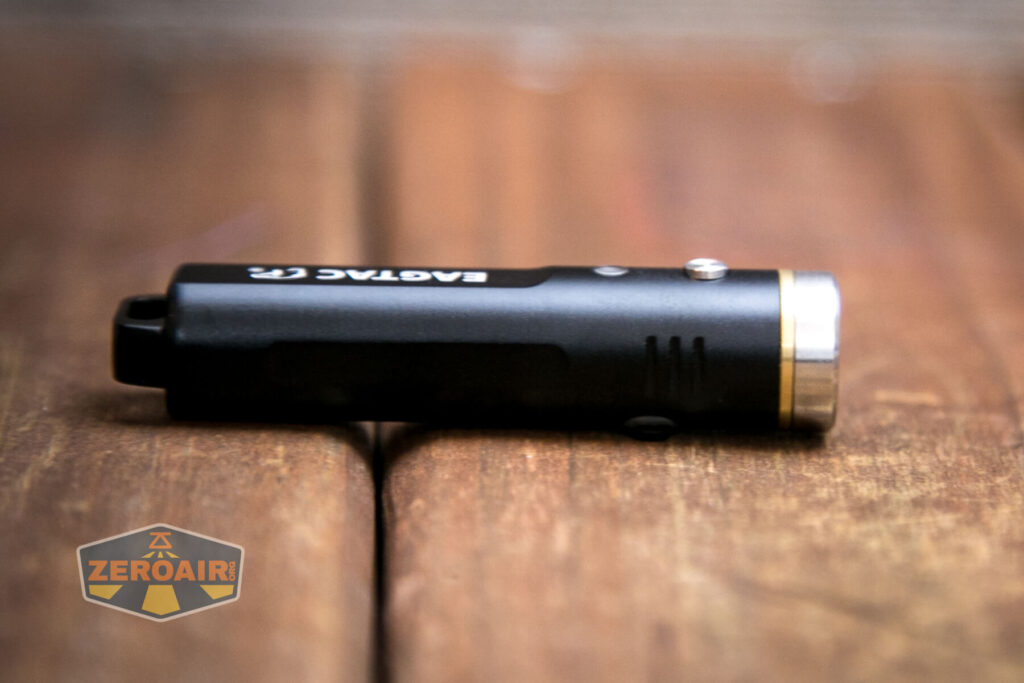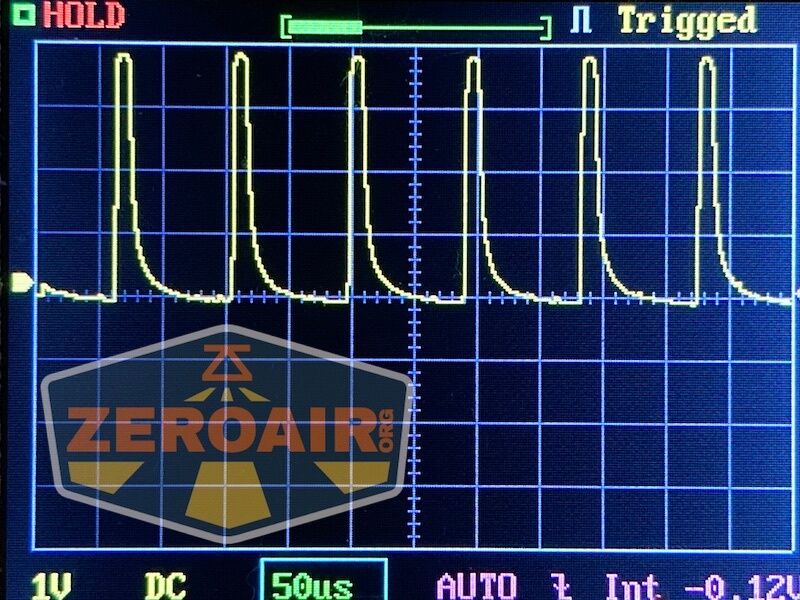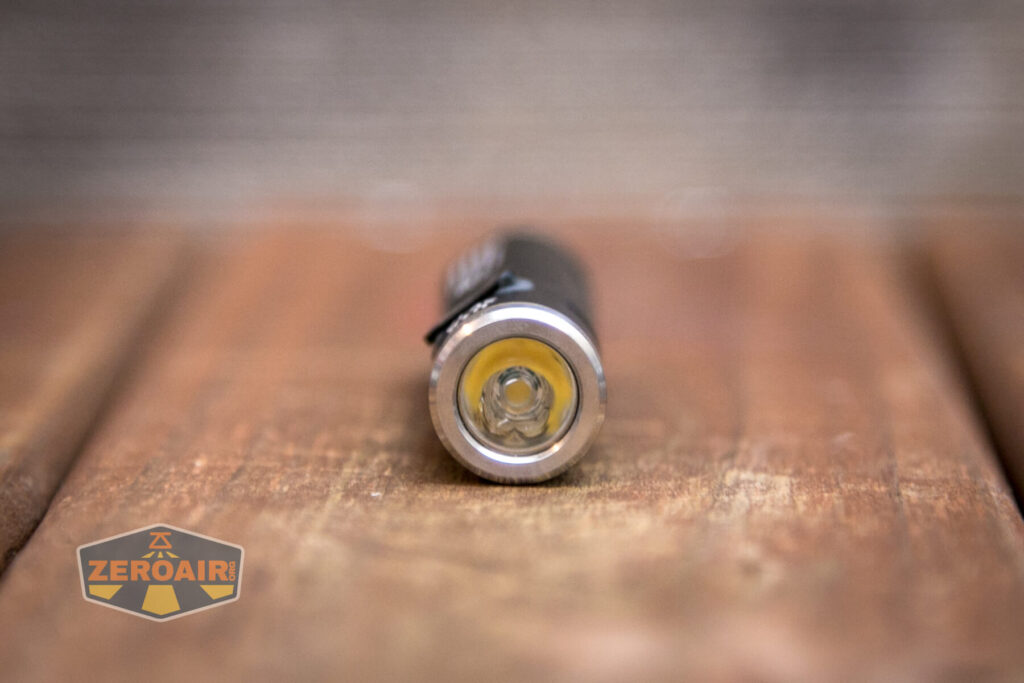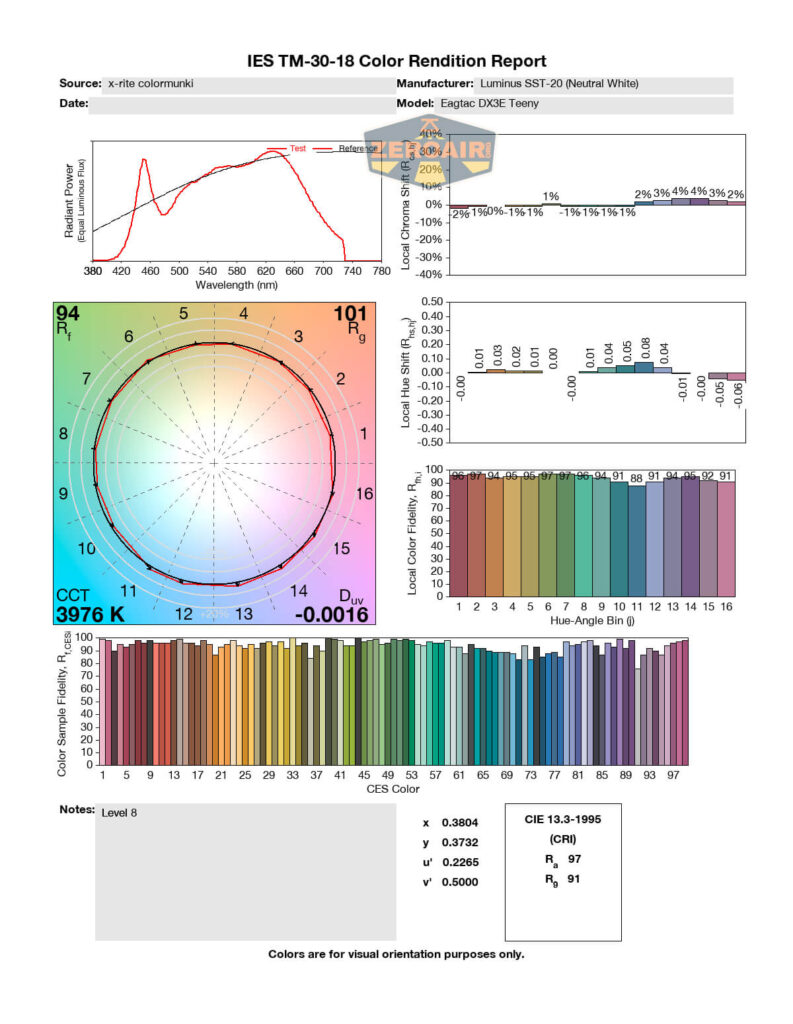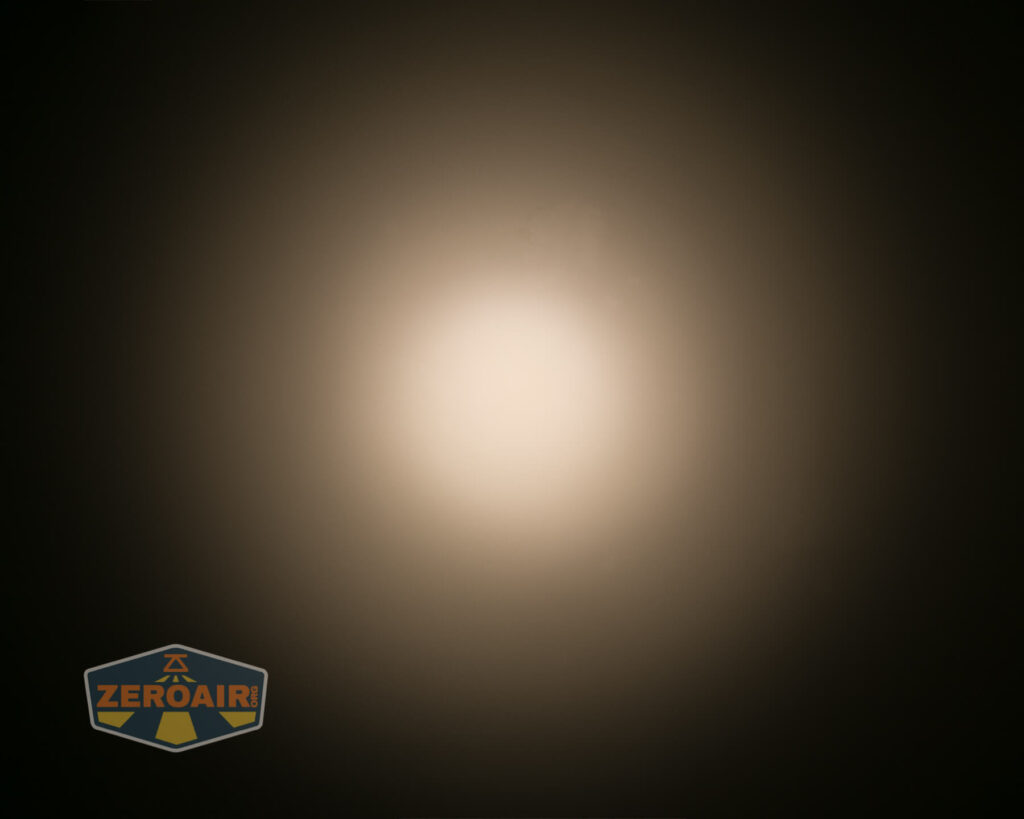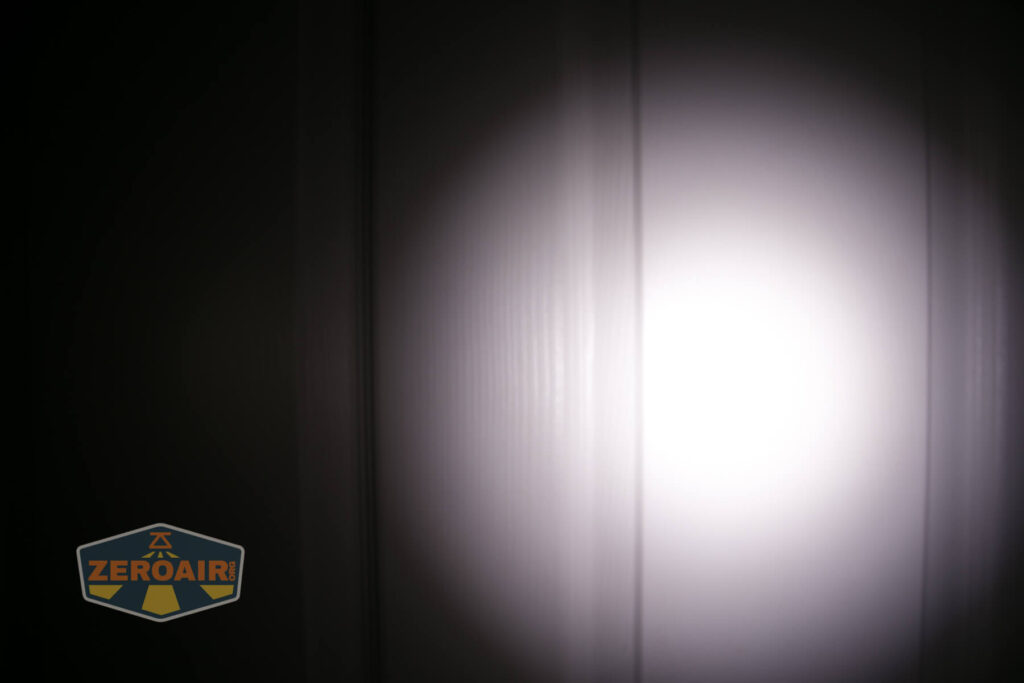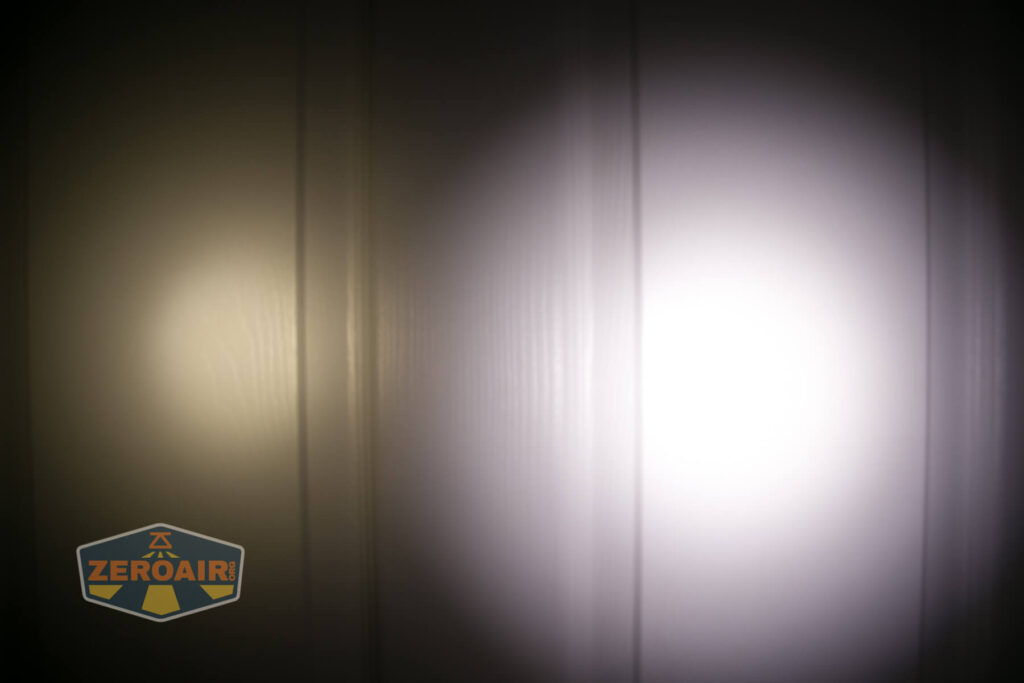Eagtac Teeny DX3E Keychain Flashlight Review
The Eagtac Teeny DX3E is a keychain flashlight available in neutral (or cool) white. It uses an e-switch and has a neat user interface.
Official Specs and Features
Here’s a link to the Eagtac Teeny DX3E keychain flashlight product page.
Versions
Only one body version is available, but there are two emitter options. They’re both Luminus SST-20 emitters, but cool or neutral white is available. I have the neutral white.
Price
The Eagtac Teeny DX3E flashlight sells for $29.90. I recommend purchasing yours at KillzoneFlashlights.com!
Short Review
The Eagtac Teeny DX3E is a compelling little installment into the keychain flashlight realm. The user interface is quite interesting, allowing access to certain categories of output. I am also pleased that the high CRI (95) Luminus SST-20 emitter is used.
Long Review
The Big Table
| Eagtac Teeny DX3E Keychain Flashlight | |
|---|---|
| Emitter: | Luminus SST-20 (Neutral White, CRI95) |
| Price in USD at publication time: | $25.90 |
| Cell: | Internal |
| Turbo Runtime Graph | High Runtime Graph |
| LVP? | |
| Switch Type: | E-Switch |
| Quiescent Current (mA): | ? |
| On-Board Charging? | Yes |
| Charge Port Type: | USB-C |
| Charge Graph | |
| Power off Charge Port | Yes |
| Claimed Lumens (lm) | 640 |
| Measured Lumens (at 30s) | 83 (13% of claim)^ |
| Candela per Lumen | 7.2 |
| Claimed Throw (m) | 105 |
| Candela (Calculated) in cd (at 30s) | 88lux @ 2.647m = 617cd |
| Throw (Calculated) (m) | 49.7 (47.3% of claim)^ |
| Claimed CCT | NW |
| Measured CCT Range (K) | 3900-4000 Kelvin |
| Item provided for review by: | KillzoneFlashlights.com |
| All my Eagtac reviews! | |
^ Measurement disclaimer: Testing flashlights is my hobby. I use hobbyist-level equipment for testing, including some I made myself. Try not to get buried in the details of manufacturer specifications versus measurements recorded here; A certain amount of difference (say, 10 or 15%) is perfectly reasonable.
What’s Included
- Eagtac Teeny DX3E flashlight
- Charging cable (USB to USB-C)
- Split ring
- Keyring hook
- Manual
Package and Manual
Build Quality and Disassembly
I’d call the Eagtac Teeny DX3E flashlight one of the “more robust” keychain flashlights of this type available today. That’s at least in the way it feels – the IPX-6 waterproof rating might not support that completely.
This flashlight is also just a touch longer than other similar keychain lights, and I think that works quite well, too.
You can see the little bit of brass near the head. That’s intended for cooling, I believe. Quite a bit of text covers the side of the DX3E.
Size and Comps
Body Diameter: 0.5 inch (13.3mm)
Head Diameter: 0.6 inch (15.3mm)
Length: 2.6 inch (67.15mm)
Weight w/ battery: 0.9 ounces (25.9 grams)
If the flashlight will headstand, I’ll show it here (usually the third photo). If the flashlight will tailstand, I’ll show that here, too (usually the fourth photo).
Here’s the test light with the venerable Convoy S2+. Mine’s a custom “baked” edition Nichia 219b triple. A very nice 18650 light.
And here’s the light beside my custom engraved TorchLAB BOSS 35, an 18350 light. I reviewed the aluminum version of that light in both 35 and 70 formats.
Retention and Carry
The main way for carrying the Eagtac Teeny DX3E flashlight will likely be on a keychain. For that, you’ll use this loop in the tailcap. This would also be perfect for paracord or something like that.
When using the loop to attach the flashlight to a keychain, you’ll likely use the included adapter, seen below.
There is no magnet or pocket clip or anything else included for carry.
Power and Runtime
Inside the Eagtac Teeny DX3E flashlight is a 400mAh LiPO battery. It’s built-in, and as far as I can tell is not user-replaceable. That’s a downside!
Here are a few runtime tests. These are the three highest modes. I found the very highest output to be short-lived enough that it’s practically not worth messing with. It also annoys me that this output value is reported on – I find it deceiving. Still, I report numbers at 30 seconds, so those values should be quite telling.
Charging
Charging happens via this USB-C port in the side of the body. This port is reported as IPX6 waterproof. That charge port cover is not attached to the flashlight at all. So keep up with it, or trust that the charge port is actually IPX6 waterproof (do not submerge!)
An appropriate cable is included: USB to USB-C.
Here are a couple of charge graphs. One is USB to USB-C, and the other is C to C. Both work just fine.
Modes and Currents
| Mode | Mode Claimed Output (lm) | Claimed Runtime | Measured Lumens |
|---|---|---|---|
| 100% | 640 | 0.6h | 83 |
| 40% | 270 | 0.8h | 88 |
| 17% | 110 | 1h | 89 |
| 8% | 55 | 2h | 44 |
| 3.5% | 30 | 5h | 17 |
| 1.5% | 10 | 12h | 6 |
| 0.5% | 3 | 40h | 2.6 |
| 0.1% | 1 | 150h | 0.1 |
Pulse Width Modulation
Six out of the eight output levels have PWM.
For reference, here’s a baseline shot, with all the room lights off and almost nothing hitting the sensor. Also, here’s the light with the worst PWM I could find. I’m adding multiple timescales, so it’ll be easier to compare to the test light. Unfortunately, the PWM on this light is so bad that it doesn’t even work with my normal scale, which is 50 microseconds (50us). 10ms. 5ms. 2ms. 1ms. 0.5ms. 0.2ms. In a display faster than 0.2ms or so, the on/off cycle is more than one screen, so it’d just (very incorrectly) look like a flat line. I wrote more about this Ultrafire WF-602C flashlight and explained a little about PWM too.
User Interface and Operation
A single switch controls the Eagtac Teeny DX3E flashlight. It’s an e-switch on the side of the head, opposite the USB-C charging port.
The metal switch cover is small but very proud. It’s an “ok” switch, but I think another generation of this light will see the switch improve. It could be slightly bigger and possibly contoured a bit. (Couple that with a user interface improvement, too…)
I don’t really love the user interface, but, it does offer quite a bit of options. For example, it’s possible to get into the lowest three modes (and stay only in the lowest three modes). So from off, you can avoid the higher output levels. High and Turbo are always accessible too. But eight modes… that’s a lot of modes for such a tiny little light. And as I said above, I’d probably just forget Turbo altogether. It’s TWO sets of double clicks to get to Turbo, and it’s never a clean entry to Turbo. It’s more of a double click to high, then another double click to “is this turbo or have I reentered high?” followed by another double click to “this is definitely high and I was already in turbo.” It’s annoying in exactly that way.
Here’s a UI table!
| State | Action | Result |
|---|---|---|
| Off | Hold | Low Group (0.1%, 0.5%, 1.5%) |
| Off | Click | Medium group (3.5%, 8%, 17%) |
| Any | Double click | High (40%) |
| High | Double click | Turbo (100%) |
| Turbo | Double click | High |
| Off | Hold 4s | Lockout |
| Lockout | Hold 4s | Unlock |
| Lockout | Click | Blue blink indicator to indicate lockout |
| Lockout | Click 10x | Iterate blink locator beacon^ |
| Lockout | Hold | Main emitter ramp up and down to indicate lockout |
| Medium Group | Hold 6s | Enter Strobe Group |
| Strobe Group | Hold | Strobe cycle: Slow Strobe > Fast Strobe > SOS > Very fast and alternating strobe > Triple Blink > Fade in and out > Return to Medium levels |
| Off | Turn on (any state) | Battery indicator after a couple of seconds^^ |
^ I found the locator beacon to be exceptionally bright and piercing – I’m pleased that turning it off is an option.
^^ Battery indicator is as follows:
Four blinks: 70-100% capacity
Three blinks: 40-70% capacity
Two blinks: 10-40% capacity
One blink: <10% capacity
LED and Beam
Both emitter options are Luminus SST-20. There’s a cool white option, which will have higher output, and the neutral white option I have here, which is both warmer and has a higher CR rating (CRI95) than the CW.
Both of these lights use a TIR.
I find the SST-20 in CRI95 and neutral/warm to be exceptionally pleasant and can easily recommend it.
LED Color Report (CRI and CCT)
The reports here indicate that the CRI claim is accurate – around 95 or 96 CRI. Also, the Neutral White claim is accurate – in fact, at 4000K, this leans to the warmer side of neutral (which is fantastic).
Beamshots
These beamshots are always with the following settings: f8, ISO100, 0.3s shutter, and manual 5000K exposure.
Tint vs BLF-348 (KillzoneFlashlights.com 219b version) (affiliate link)
I keep the test flashlight on the left, and the BLF-348 reference flashlight on the right.
I compare everything to the KillzoneFlashlights.com 219b BLF-348 because it’s inexpensive and has the best tint!
Conclusion
What I like
- Good size
- Feels like a quality build
- Waterproof USB-C port
- Luminus SST-20 is neutral/warm and High CRI
- Possible to turn off the locator beacon
- User interface is fairly versatile
What I don’t like
- Non-replaceable internal LiPO
- No pocket clip
- Switch needs refinement
- Too many modes
- Turbo stepdown is too quick
Notes
- This content originally appeared at zeroair.org. Please visit there for the best experience!
- For flashlight-related patches, stickers, and gear, head over to PhotonPhreaks.com!
- Please use my amazon.com referral link to help support zeroair.org!
- Please support me on Patreon! I deeply appreciate your support!




















